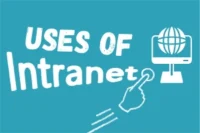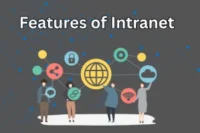Difference Between the World Wide Web and the Internet
Published: 24 Sep 2025
Many people often use the terms Internet and World Wide Web (WWW) interchangeably. While they are closely connected, they are not the same thing. The Internet is the global network of networks, while the World Wide Web is just one of the services that runs on top of the Internet.
In this article, we’ll explain the difference between the Internet and the world wide Web, how they work together, their history, and why this distinction is important.
What is Internet?
The Internet is a vast global system of interconnected networks that allows devices around the world to communicate. It is made up of:
- Hardware: routers, cables, satellites, servers, and computers
- Protocols: TCP/IP (Transmission Control Protocol/Internet Protocol)
- Services: email, file transfer (FTP), VoIP, instant messaging, online gaming
Think of the Internet as the infrastructure the highways and roads that connect cities. You can use the Internet without the Web, for example when sending an email, making a VoIP call, or using an app that connects directly to servers.
What is World Wide Web (WWW)?
The World Wide Web (WWW) is a system of web pages and websites connected through hyperlinks and accessible via the Internet. It was invented in 1989 by Tim Berners-Lee at CERN.
Key components of the Web include:
- Web pages written in HTML
- Web browsers like Chrome, Firefox, or Safari
- Web servers hosting content
- Protocols such as HTTP and HTTPS
Unlike the Internet, which is the foundation, the Web is a service running on top of the Internet. When you visit a website, your browser requests data via the Internet and displays it as a web page.
Internet vs World Wide Web: Key Differences
The table below highlights the distinction between Internet and Web:
| Aspect | Internet | World Wide Web (WWW) |
| Definition | A global network of interconnected computers | A collection of web pages linked via the Internet |
| Scope | Includes email, FTP, VoIP, online gaming, apps | Only websites, web pages, and online content |
| Protocols | TCP/IP, SMTP, FTP, VoIP | HTTP, HTTPS, HTML |
| Components | Routers, servers, data packets, cables | Web browsers, servers, web pages |
| Dependency | Independent of the Web | Dependent on the Internet to function |
| Examples | Sending email, VoIP call, transferring files | Browsing a website, watching YouTube, reading blogs |
How the Internet and Web Work Together
The Web is built on top of the Internet. Here’s how:
- You type a URL (like www.example.com) into your browser.
- Your request travels through the Internet using TCP/IP.
- The request reaches a web server.
- The server sends back the web page data.
- Your browser displays it as a website.
Without the Internet, the Web cannot exist. However, the Internet can still work without the Web (e.g., email).
History & Timeline
Following is the History &Timeline of the Internet, highlighting the key milestones that shaped its evolution into the global network we use today.
- 1960s: ARPANET, the precursor to the Internet, was created in the U.S.
- 1970s–80s: TCP/IP became the standard communication protocol.
- 1989: Tim Berners-Lee proposed the World Wide Web at CERN.
- 1991: The first website went live.
- Today: The Internet powers billions of connected devices, and the Web is its most popular service.
Examples & Use Cases
Below are some practical examples and use cases that show how the Internet and the Web can function separately as well as together.
- Internet without Web: sending emails via Outlook, using FTP for file transfers, making VoIP calls, or connecting IoT devices.
- Web with Internet: browsing YouTube, shopping online, reading blogs, or accessing digital libraries.
- Combination: streaming apps like Netflix, using social media platforms, or managing finances through online banking.
Why the Difference Matters
Understanding the Internet vs. Web distinction is important because:
- It improves digital literacy: helping people use technology more effectively and avoid common misconceptions.
- It supports learning: making it easier to study subjects like computer networking, web development, and cybersecurity.
- It clarifies infrastructure: showing how different services, from email to websites, are built on top of the Internet.
- It guides practical use: allowing users to better troubleshoot issues, select tools, and understand how online systems work.
Conclusion
In this article, we have explained the Difference Between the World Wide Web and the Internet. The Internet is the global network infrastructure, while the World Wide Web is a service built on top of it. The Internet powers many services such as email, file transfer, VoIP, and IoT, whereas the Web specifically focuses on websites and online content.
In short:
- The Web depends on the Internet.
- The Internet can exist without the Web.
Did this article help clear up the difference between the Internet and the World Wide Web? Share your thoughts or questions in the comments below we’d love to hear from you!
FAQs
Following are some frequently asked questions about the Internet and the Web. Each answer is explained clearly to make the concepts easier to understand.
The Internet is the global infrastructure of networks that connects computers and devices, while the Web is just one service built on it. The Web uses browsers and websites to let people access information online.
No. The Web cannot function without the Internet because it relies on Internet protocols to load websites and share data. Without an Internet connection, browsers cannot access web pages.
The Internet was developed first in the 1960s as a way to connect networks and share information. The Web was introduced much later in 1989 to make this information easier to access and navigate.
Email uses the Internet but does not necessarily require the Web. For example, you can send and receive emails through desktop clients like Outlook or Thunderbird without opening a browser.
HTTPS is important because it secures communication between your browser and the website’s server. It encrypts data, protects user privacy, and builds trust by ensuring that information is not intercepted or tampered with.
Examples include email, FTP (file transfer), VoIP calls, instant messaging, and IoT device connectivity all of which use the Internet but not necessarily the Web.
Understanding the difference improves digital literacy, helps avoid confusion, and gives a clearer idea of how online technologies and services work.

- Be Respectful
- Stay Relevant
- Stay Positive
- True Feedback
- Encourage Discussion
- Avoid Spamming
- No Fake News
- Don't Copy-Paste
- No Personal Attacks

- Be Respectful
- Stay Relevant
- Stay Positive
- True Feedback
- Encourage Discussion
- Avoid Spamming
- No Fake News
- Don't Copy-Paste
- No Personal Attacks





